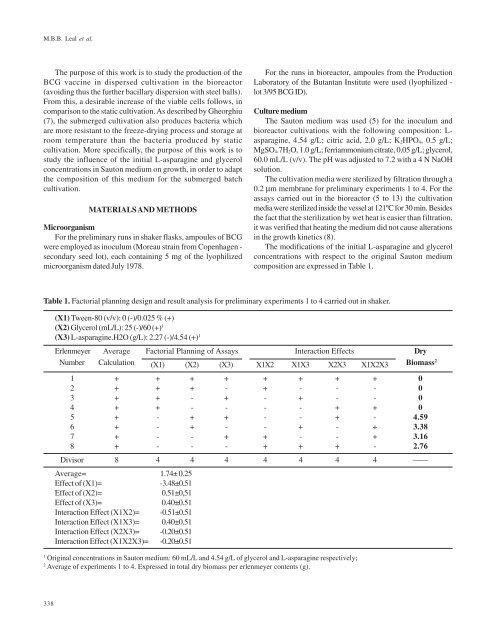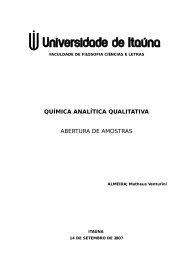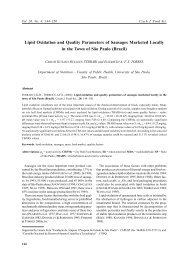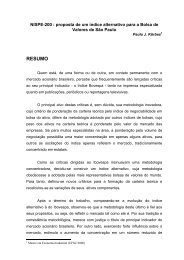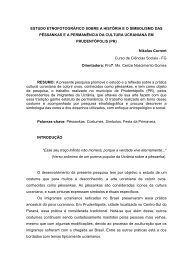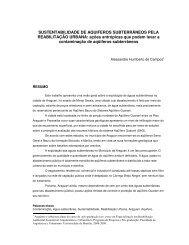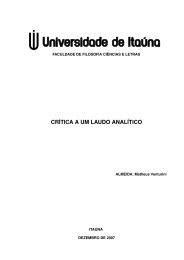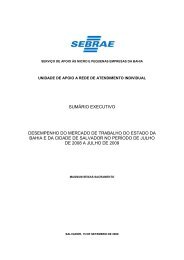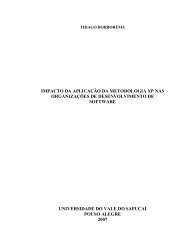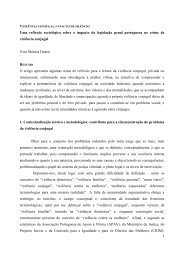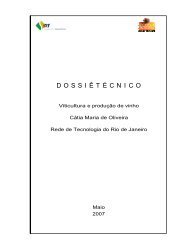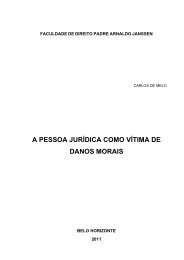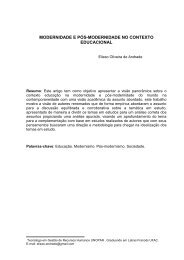MAL 007
MAL 007
MAL 007
Create successful ePaper yourself
Turn your PDF publications into a flip-book with our unique Google optimized e-Paper software.
M.B.B. Leal et al.<br />
The purpose of this work is to study the production of the<br />
BCG vaccine in dispersed cultivation in the bioreactor<br />
(avoiding thus the further bacillary dispersion with steel balls).<br />
From this, a desirable increase of the viable cells follows, in<br />
comparison to the static cultivation. As described by Gheorghiu<br />
(7), the submerged cultivation also produces bacteria which<br />
are more resistant to the freeze-drying process and storage at<br />
room temperature than the bacteria produced by static<br />
cultivation. More specifically, the purpose of this work is to<br />
study the influence of the initial L-asparagine and glycerol<br />
concentrations in Sauton medium on growth, in order to adapt<br />
the composition of this medium for the submerged batch<br />
cultivation.<br />
338<br />
MATERIALS AND METHODS<br />
Microorganism<br />
For the preliminary runs in shaker flasks, ampoules of BCG<br />
were employed as inoculum (Moreau strain from Copenhagen -<br />
secondary seed lot), each containing 5 mg of the lyophilized<br />
microorganism dated July 1978.<br />
For the runs in bioreactor, ampoules from the Production<br />
Laboratory of the Butantan Institute were used (lyophilized -<br />
lot 3/95 BCG ID).<br />
Culture medium<br />
The Sauton medium was used (5) for the inoculum and<br />
bioreactor cultivations with the following composition: Lasparagine,<br />
4.54 g/L; citric acid, 2.0 g/L; K2HPO4, 0.5 g/L;<br />
MgSO4.7H2O, 1.0 g/L; ferriammonium citrate, 0.05 g/L; glycerol,<br />
60.0 mL/L (v/v). The pH was adjusted to 7.2 with a 4 N NaOH<br />
solution.<br />
The cultivation media were sterilized by filtration through a<br />
0.2 µm membrane for preliminary experiments 1 to 4. For the<br />
assays carried out in the bioreactor (5 to 13) the cultivation<br />
media were sterilized inside the vessel at 121ºC for 30 min. Besides<br />
the fact that the sterilization by wet heat is easier than filtration,<br />
it was verified that heating the medium did not cause alterations<br />
in the growth kinetics (8).<br />
The modifications of the initial L-asparagine and glycerol<br />
concentrations with respect to the original Sauton medium<br />
composition are expressed in Table 1.<br />
Table 1. Factorial planning design and result analysis for preliminary experiments 1 to 4 carried out in shaker.<br />
(X1) Tween-80 (v/v): 0 (-)/0.025 % (+)<br />
(X2) Glycerol (mL/L): 25 (-)/60 (+) 1<br />
(X3) L-asparagine.H2O (g/L): 2.27 (-)/4.54 (+) 1<br />
Erlenmeyer Average Factorial Planning of Assays Interaction Effects Dry<br />
Number Calculation (X1) (X2) (X3) X1X2 X1X3 X2X3 X1X2X3 Biomass2<br />
1 + + + + + + + + 0<br />
2 + + + - + - - - 0<br />
3 + + - + - + - - 0<br />
4 + + - - - - + + 0<br />
5 + - + + - - + - 4.59<br />
6 + - + - - + - + 3.38<br />
7 + - - + + - - + 3.16<br />
8 + - - - + + + - 2.76<br />
Divisor 8 4 4 4 4 4 4 4 ——<br />
Average= 1.74± 0.25<br />
Effect of (X1)= -3.48±0.51<br />
Effect of (X2)= 0.51±0,51<br />
Effect of (X3)= 0.40±0.51<br />
Interaction Effect (X1X2)= -0.51±0.51<br />
Interaction Effect (X1X3)= 0.40±0.51<br />
Interaction Effect (X2X3)= -0.20±0.51<br />
Interaction Effect (X1X2X3)= -0.20±0.51<br />
1 Original concentrations in Sauton medium: 60 mL/L and 4.54 g/L of glycerol and L-asparagine respectively;<br />
2 Average of experiments 1 to 4. Expressed in total dry biomass per erlenmeyer contents (g).


